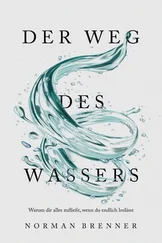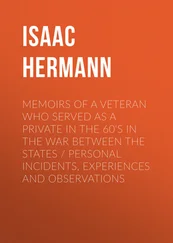Carter stayed at Vanity Fair for twenty-five years and sent me to India to report on 26/11 and the terrorists who overtook the Taj Palace in Mumbai; to France, on multiple occasions, to report on the rise of anti-Semitism; to Afghanistan; and to England to chronicle the life of Marie Colvin. He knew legal dramas attracted me and called when one caught his attention—Richard Jewell; the savaging of the Haitian immigrant Abner Louima by a New York City police detective; the build up to the Iraq War in 2003. Over the years, we did dozens of stories together, several of which would be beautifully edited by Wayne Lawson’s successor, Mark Rozzo. A few years ago, Graydon collected them and presented them to me in a stylish leather-bound volume that he had archly titled Dynasties, Angels and Compromising Positions . On the spine, I saw his display title: The Brenner Years in Vanity Fair. The reporter in me wondered: was he telling me to retire ? He was not.
Our last story together was the profile that closes this collection: Graydon and my current editor David Friend divined it was time to revisit the history of Trump’s mentor Roy Cohn and his long, sordid association with his final prodigy, Donald Trump. As always with Graydon, an elegant typed thank-you on a Smythson’s card appeared after the story was published. This one was particularly poignant. Graydon had made the decision to retire, but I did not know it yet. He had written profoundly and at length, month after month, in his editor’s letter, about the rise of the moral monsters around Trump and felt the time had come to move on. In his note, he seemed almost sentimental about the rogues and con men that had fed both our careers. How had we both started out thinking and writing about Roy Cohn and Donald Trump, and how could we still be grappling decades later with their legacy? “To think it would all resurface today,” he noted, restraint hardly disguising the emotions he kept in check.
MARIE COLVIN’S PRIVATE WAR
AUGUST 2012
“They just don’t make men like they used to.”
“Why the fuck is that guy singing? Can’t someone shut him up?” Marie Colvin whispered urgently after dropping into the long, dark, dank tunnel that would lead her to the last reporting assignment of her life. It was the night of February 20, 2012. All Colvin could hear was the piercing sound made by the Free Syrian Army commander accompanying her and the photographer Paul Conroy: “Allahu Akbar. Allahu Akbar.” The song, which permeated the two-and-a-half-mile abandoned storm drain that ran under the Syrian city of Homs, was both a prayer (God is great) and a celebration. The singer was jubilant that the Sunday Times of London’s renowned war correspondent Marie Colvin was there. But his voice unnerved Colvin. “Paul, do something!” she demanded. “Make him stop!”
For anyone who knew her, Colvin’s voice was unmistakable. All her years in London had not subdued her American whiskey tone. Just as memorable was the cascade of laughter that always erupted when there seemed to be no way out. It was not heard that night as she and Conroy made their way back into a massacre being perpetrated by the troops of President Bashar al-Assad near Syria’s western border. The ancient city of Homs was now a bloodbath.
“Can’t talk about the way in, it is the artery for the city and I promised to reveal no details,” Colvin had emailed her editor after she and Conroy made their first trip into Homs, three days earlier. They had arrived late Thursday night, thirty-six hours away from press deadline, and Colvin knew that the foreign desk in London would soon be bonkers. The day before she walked into the apartment building in Homs where two grimy rooms were set up as a temporary media center, the top floor had been sheared off by rockets. Many thought the attack had been deliberate. The smell of death assaulted Colvin as mutilated bodies were rushed out to a makeshift clinic blocks away.
At 7:40 a.m., Colvin had opened her laptop and emailed her editor. There wasn’t a hint of panic or apprehension in her exuberant tone: “No other Brits here. Have heard that Spencer and Chulov of the Torygraph [ Private Eye ’s nickname for the Telegraph ] and Guardian trying to make it here but so far we have leapfrogged ahead of them. Heavy shelling this morning.”
She was in full command of her journalistic powers; the turbulence of her London life had been left behind. Homs, Colvin wrote a few hours later, was “the symbol of the revolt, a ghost town, echoing with the sound of shelling and crack of sniper fire, the odd car careening down a street at speed. Hope to get to a conference hall basement where 300 women and children living in the cold and dark. Candles, one baby born this week without medical care, little food.” In a field clinic, she later observed plasma bags suspended from wooden coat hangers. The only doctor was a veterinarian.
Now, on her way back into Homs, Colvin moved slowly, crouching in the four-and-a-half-foot-high tunnel. Fifty-six years old, she wore her signature—a black patch over her left eye, lost to a grenade in Sri Lanka in 2001. Every twenty minutes or so, the sound of an approaching motorcycle made her and Conroy flatten themselves against the wall. Conroy could see injured Syrians strapped on the backs of the vehicles. He worried about Colvin’s vision and her balance; she had recently recovered from back surgery. “Of all the trips we had done together, this one was complete insanity,” Conroy told me.
¬
The journey had begun in a muddy field, where a concrete slab marked the entrance to the tunnel. They had been taken through orchards by former military officers fighting against al-Assad. “We move when it’s dark,” one of them said. “After that, just hand signals. No noise until we are in the tunnel.”
The night was cold, the sky lit with hundreds of rocket missiles. Inside Homs, twenty-eight thousand people were surrounded by al-Assad’s troops. Food supplies and power had been cut off, and foreign reporters had been banned. In Beirut earlier, Colvin had learned that the army was under orders to kill journalists. They had two options for penetrating the occupied area: race across a highway swept by floodlights or crawl for hours through a frigid tunnel. “Paul, I don’t like this,” she said.
Syria under al-Assad broke all rules of war. In Libya in 2011, Colvin and Conroy had spent months sleeping on floors in the besieged city of Misrata, living on “the war-zone diet”—Pringles, tuna, granola bars, and water—relying on each other for survival. Their arena was the closed world of war: one-room concrete safe houses with cheap Bokhara carpets and a diesel stove in the middle, mint tea offered by Free Syrian Army soldiers.
They were an unlikely pair. Conroy, a decade younger and a natural comedian, was called “the Scouser” by his colleagues for his working-class Liverpool accent. His sharp cheekbones and high brow reminded them of the actor Willem Dafoe. Colvin was the daughter of two Long Island public-school teachers, but she had the air of an aristocrat. Her nails were a perfect scarlet, and her double strand of pearls was a gift from Yasser Arafat. In a war zone, Colvin always wore a brown jacket with “TV” in large letters of silver gaffer tape on the back. Not this time: She was well aware that she could be a target for al-Assad’s soldiers, so she wore a Prada black nylon quilted coat as camouflage.
As they left for the second trip, they learned that there would be no space for them to carry flak jackets, helmets, or video equipment. Trained as an artillery officer in the British army, Conroy counted the rockets coming down and clocked forty-five explosions a minute. “Every bone in my body is telling me not to do this,” he said. Colvin listened to him carefully, her head cocked to one side. “Those are your concerns,” she said. “I’m going in, no matter what. I’m the reporter, you’re the photographer. If you want, you can stay here.” It was the first argument they had ever had. “You know I’ll never leave you,” Conroy said.
Читать дальше












